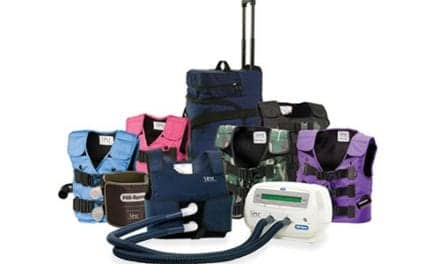Diagnosing early-stage lung cancer with low-dose computed tomography (CT) screening drastically improves its cure rate measured over a 20-year period, according to a large-scale international study by Mount Sinai researchers published in Radiology.
The results show that patients diagnosed with lung cancer via CT screening have a 20-year survival rate—an approximation of the cure rate—of 81%. Among the 1,257 participants diagnosed with lung cancer, 81% had stage I disease, and their long-term survival rate was 87%. If diagnosed in the earliest stage I (≤10mm), it was 95%.
In the United States, the average five-year survival rate for all lung cancer patients is 25.4% because only 21% of lung cancers are diagnosed at an early stage. More than half of the people with lung cancer die within one year of their diagnosis, making it the leading cause of cancer deaths. By the time symptoms appear, it is often too late.
The findings are the latest to demonstrate the importance of routine early screening in detecting cancers when they are small enough to be cured. Unfortunately, fewer than 6% of the people who are eligible for screening are currently getting it.
“While screening doesn’t prevent cancers from occurring, it is the major tool to identify lung cancers in their earliest stage when they can be cured,” says the study’s lead author, Claudia Henschke, PhD, MD, professor of diagnostic, molecular and interventional radiology and director of the Early Lung and Cardiac Action Program (ELCAP) at the Icahn School of Medicine at Mount Sinai in New York, in a release. “Ultimately, anyone interested in being screened needs to know that if they are unfortunate enough to develop lung cancer, it can be cured if found early.”
While treatments of more advanced cancers with targeted therapy and immunotherapy have come a long way, the best tool against lung cancer deaths is early diagnosis through low-dose CT screening before symptoms occur, according to the study authors.
“Symptoms occur mainly in late-stage lung cancer,” says co-author Rowena Yip, PhD, MPH, senior biostatistician of ELCAP, in a release. “Thus, the best way to find early-stage lung cancer is by enrolling in an annual screening program.”
The US Preventive Services Task Force recommends annual lung cancer screening with low-dose CT in adults aged 50 to 80 years who have a 20 pack-year smoking history, which equals at least a pack a day for 20 years, and who currently smoke or have quit within the past 15 years.
Henschke and colleagues have been studying the effectiveness of cancer detection with low-dose CT screening for years. The efforts of the researchers to advance CT screening for early lung disease led to the creation of the International Early Lung Cancer Action Program. Started in 1992, this multi-institution, multinational research program has enrolled more than 89,000 participants from over 80 institutions.
In 2006, the researchers identified a 10-year survival rate of 80% for the patients whose cancer was identified by CT screening. For this study, they looked at 20-year survival rates.
“What we present here is the 20-year follow-up on participants in our screening program who were diagnosed with lung cancer under annual screening and subsequently treated,” Henschke says in the release. “The key finding is that even after this long a time interval they are not dying of their lung cancer. And even if new lung cancers were found over time, as long as they continued with annual screening, they could be cured.”
Henschke continues, “Ultimately, the critical clinically relevant information for people interested in screening relates to understanding their chance of being diagnosed with lung cancer and, if detected during screening, how curable it would be compared to being diagnosed based on symptoms.”
Photo 35665692 © Tyler Olson | Dreamstime.com









